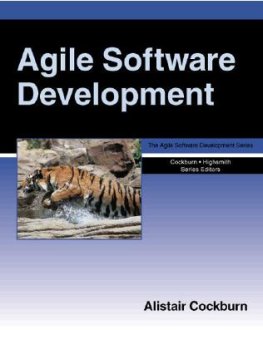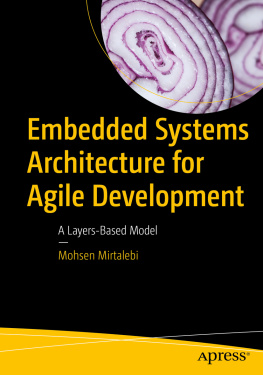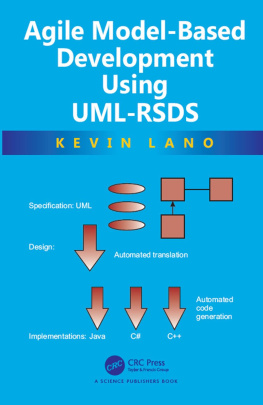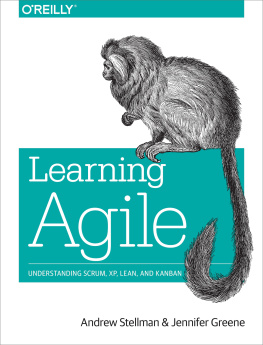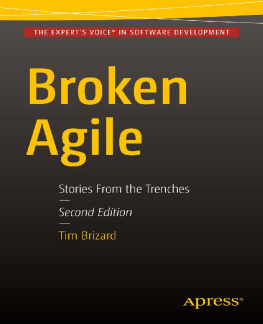Is software development an art, a craft, science, engineering, or something else entirely? Does it even matter?
Yes, it does matter, and it matters to you. Your actions and their results will differ depending on which of those is more correct.
The main thing is this: You want your software out soon and relatively defect-free, but more than that, you need a way to examine how your team is doing along the way.
Purpose
It is time to reexamine the notions underlying software development.
The trouble is that as we look at projects, what we notice is constrained by what we know to notice. We learn to distinguish distinct and separable things in the extremely rich stream of experience flowing over us, and we pull those things out of the stream for examination. To the extent that we lack various key distinctions, we overlook things that are right in front of us.
We anchor the distinctions in our memories with words and use those words to reflect on our experiences. To the extent that we lack words to anchor the distinctions, we lack the ability to pull our memories into our conversations and the ability to construct meaningful strategies for dealing with the future.
In other words, to reexamine the notions that underlie software development, we have to reconsider the distinctions that we use to slice up our experience and the words we use to anchor our memories.
This is, of course, a tall order for any book. It means that some of the earlier parts of this book will be rather abstract. I see no way around it, though.
The last time people constructed a vocabulary for software development was in the late 1960s, when they coined the phrase software engineering, as both a wish and a direction for the future.
It is significant that at the same time the programming-should-be-engineering pronouncement was made, Gerald Weinberg was writing The Psychology of Computer Programming. In that book, software development doesn't look very much like an engineering discipline at all. It appears to be something very human centric and communication centric. Of the two, Weinberg's observations match what people have reported in the succeeding 30 years, and software engineering remains a wishful term.
Four Goals
In this book, I shall
Build distinctions and vocabulary for talking about software development
Use that vocabulary to examine and anchor critical aspects of software projects that have been pushed to the sidelines too often
Work through the ideas and principles of methodologies as "rules of behavior"
Merge our need for these rules of behavior with the idea that each project is unique, and derive effective and self-evolving rules
I hope that after reading this book, you will be able to use the new vocabulary to look around your project, notice things you didn't notice before, and express those observations. As you gain facility, you should be able to
Discuss Extreme Programming, the Capability Maturity Model, the Personal Software Process, or your favorite process Derive when each process is more or less applicable Understand people who have differing opinions, abilities, and experience.
Audience
Each person coming to this book does so with a different experience level, reading style, and role. Here's how you might read the book to use it to your greatest advantage.
By Experience
This book is written for the more experienced audience. The book does not contain procedures to follow to develop software; in fact, core to the book is the concept that every technique has limitations. Therefore, it is impossible to name one best and correct way to develop software. Ideally, the book helps you reach that understanding and then leads you to constructive ideas about how to deal with this real-world situation.
If you are an intermediate practitioner who has experience with software-development projects, and if you are now looking for the boundaries for the rules you have learned, you will find the following topics most helpful:
What sorts of methodologies fit what sorts of projects
Indices for selecting the appropriate methodology category for a project
The principles behind agile methodologies Being an intermediate practitioner, you will recognize that you must add your own judgement when applying these ideas.
If you are an advanced practitioner, you already know that all recommendations vary in applicability.
You may be looking for words to help you express that. You will find those words where the following topics are presented:
Managing the incompleteness of communication
Continuous methodology reinvention
The manifesto for agile software development A few topics should be new even to advanced software developers: the vocabulary for describing methodologies and the technique for just-in-time methodology tuning.
By Reading Style
The earlier chapters are more abstract than the later chapters.
If you enjoy abstract material, read the book from beginning to end, watching the play of abstract topics to see the resolution of the impossible questions through the course of the book.
If you want concrete materials in your hands as quickly as possible, you may want to skip over the early chapters on the first read and start with Chapter 3, "Methodologies." Return to the sections about "Cooperative Games" and "Convection Currents of Information" to get the key parts of the new vocabulary. Dip into the introduction and the sections about Individuals and Teams to fill in the gaps.
By Role
People who sponsor software development can get from this book an understanding of how various organizational, behavioral, and funding structures affect the rate at which they receive value from their development teams. Project sponsors may pay less attention to the details of methodology construction than people who are directly involved in the projects. They should still understand the consequences of certain sorts of methodology decisions.
Team leads and project managers can see how seating, teaming, and individuality affect their project's outcome. They can also learn what sorts of interventions are more likely to have better or worse consequences. They will need to understand the construction and consequences of their methodology and how to evolve their methodologymaking it as light as possible, but still sufficient.
Process and methodology designers can examine and argue with my choice of terms and principles for methodology design. The ensuing discussions should prove useful for the field.
Software developers should come to know this material simply as part of being in the profession. In the normal progression from newcomers to leaders, they will have to notice what works and doesn't work on their projects. They will also have to learn how to adjust their environment to become more effective. "Our methodology" really means "the conventions we follow around here," and so it becomes every professional's responsibility to understand the basics of methodology construction.
This book is far from the last word in methodology construction, but it does contain some first words.
Organization of the Book
The book is designed to set up two nearly impossible questions at the beginning and derive answers for those questions by the end of the book:
If communication is fundamentally impossible, how can people on a project manage to do it?
If all people and all projects are different, how can we create any rules for productive projects?
To achieve that design, I wrote the book a bit in the "whodunit" style of a mystery. I start with the broadest and most philosophical discussions: "What is communication?" and "What is software development?"
The discussion moves through still fairly abstract topics such as "What are the characteristics of a human?" and "What affects the movement of ideas within a team?"

